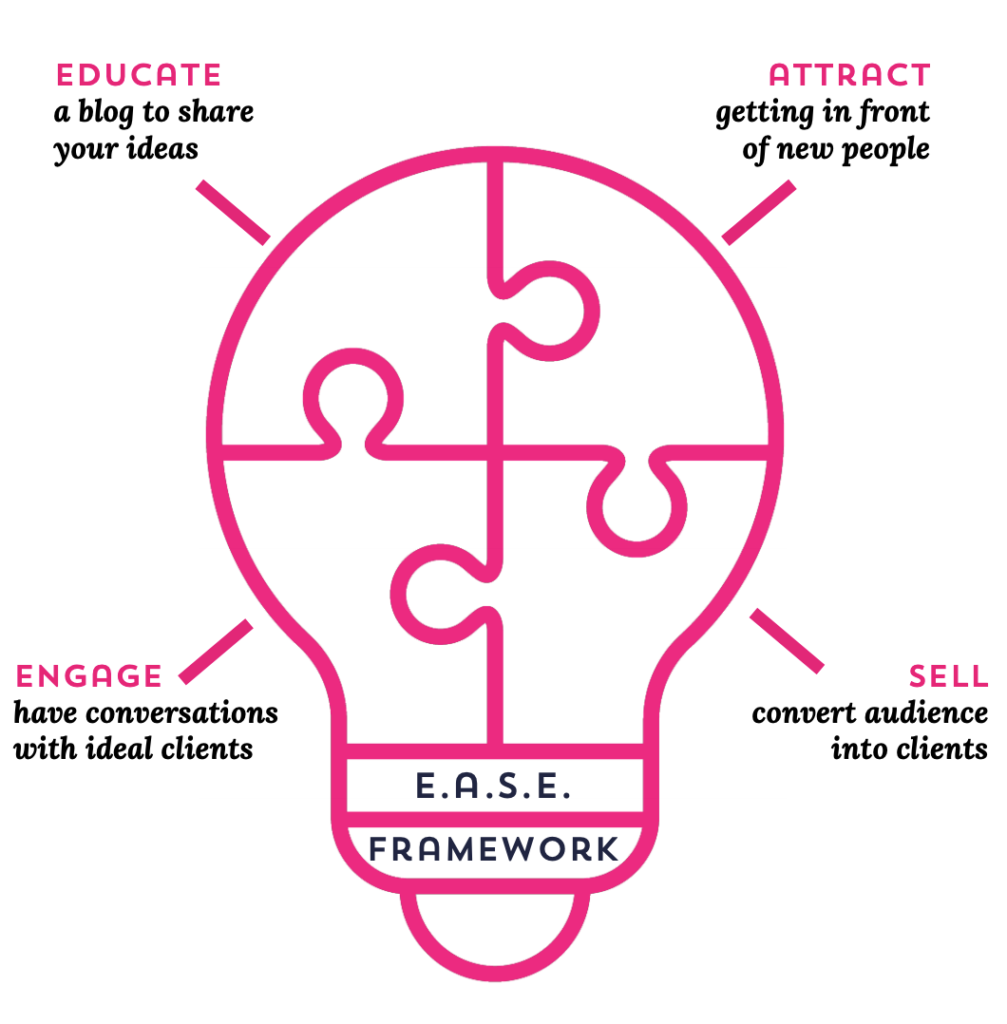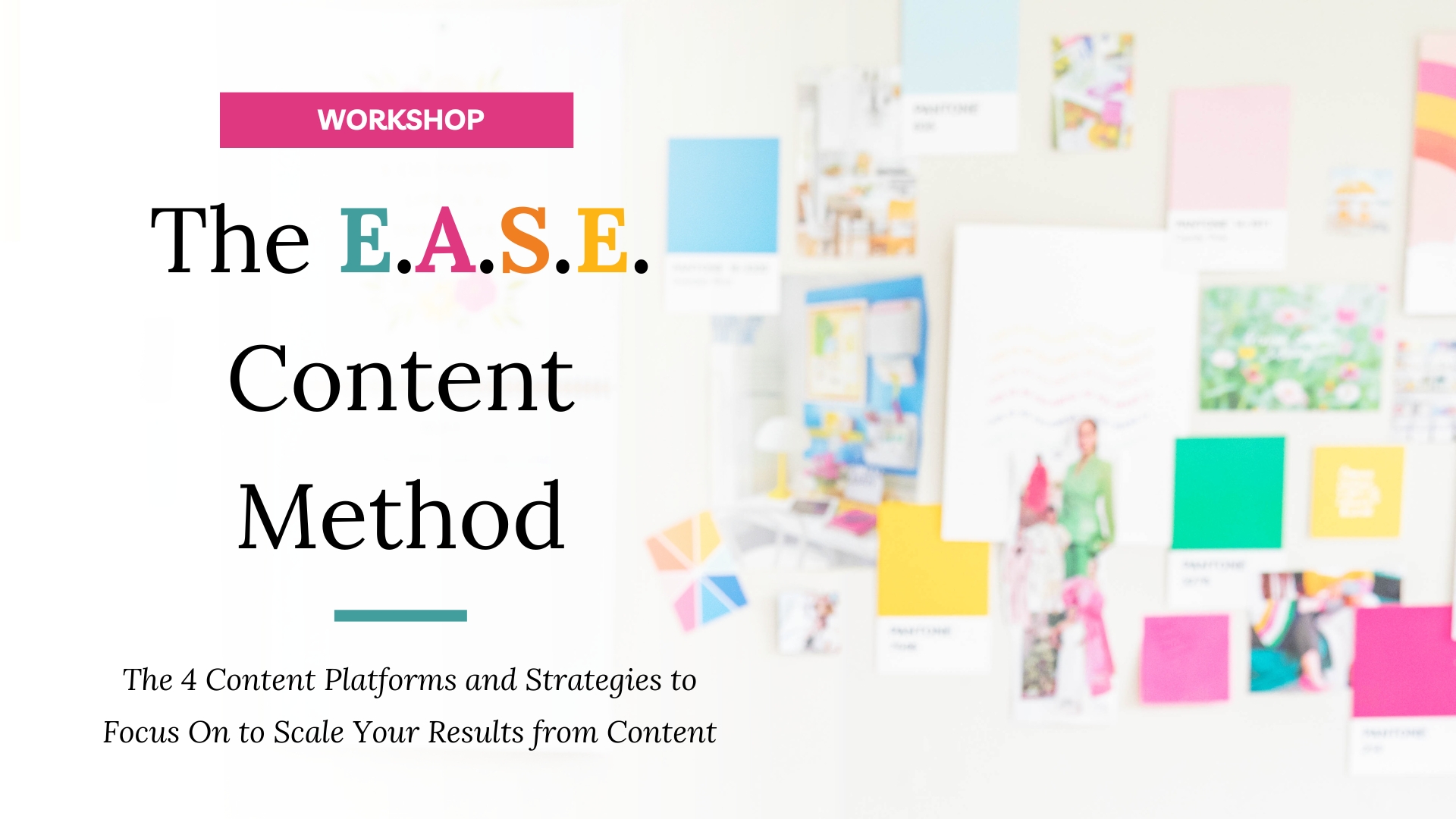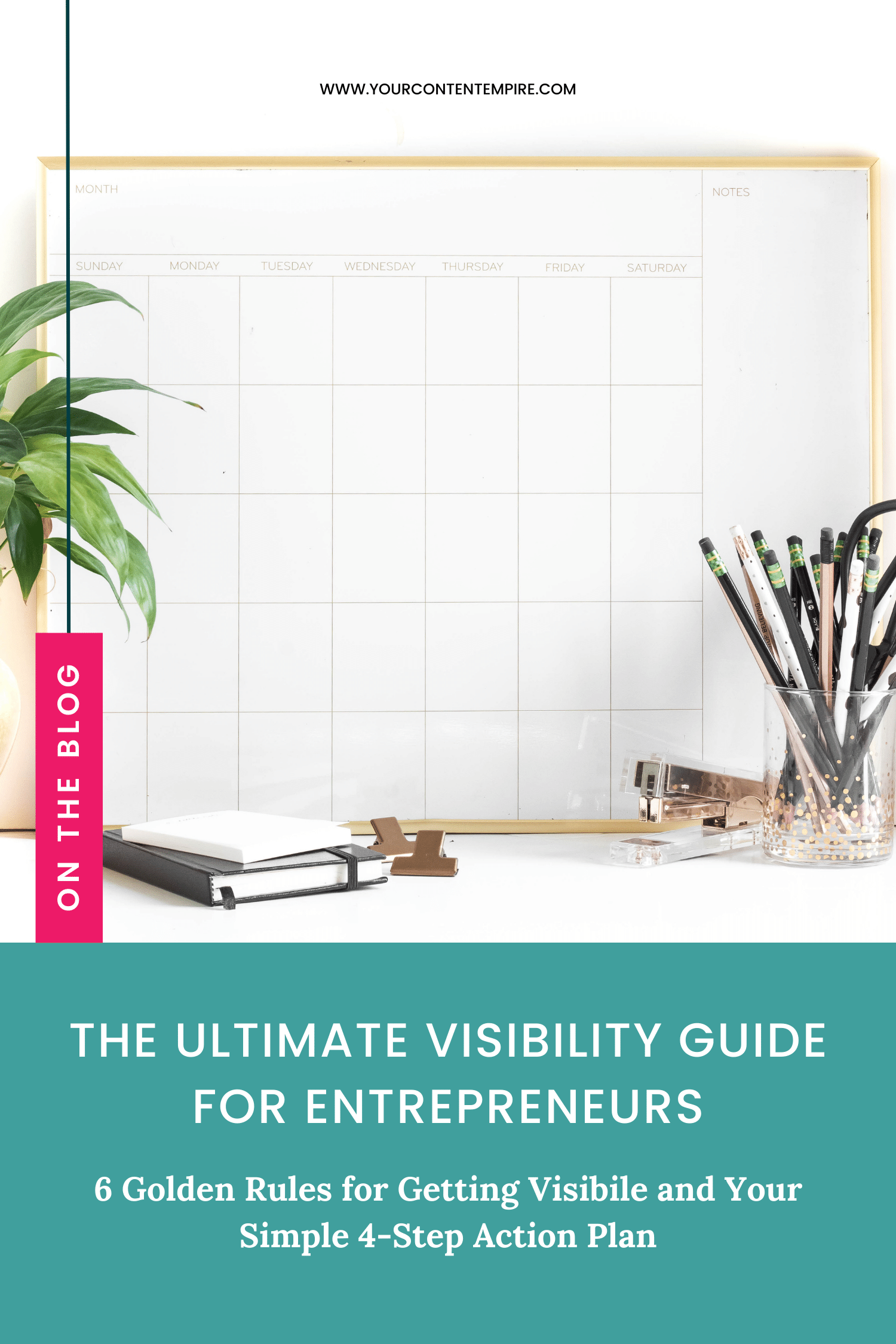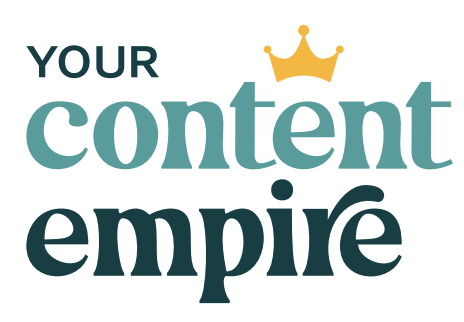If I had a nickel for every time I heard someone set a goal or theme for this year of visibility – well, as Maren Morris puts, “I’d basically be sitting on a big ass pile of dimes.”
And it isn’t that anything is wrong with this goal but it’s just how rarely it’s backed up with actionable targets or ways to measure it.
So if, as we get closer to the end of the year (or further into it, depending on when you’re reading this), you’re finding that you haven’t made much headway towards your “get more visible” or your not seeing the payoff of your “get more visible” activities, then this post has your name written all over it.
In this post, I’m going to share with you 6 essential ingredients of setting and reaching a visibility goal.
But remember – visibility is a long-game that builds up momentum over time. And the benefits won’t always be super obvious – it could come a few months down the road with a big-break opportunity that comes knocking because of seeds you previously planted.
Visibility for Entrepreneur Rule #1 – Don’t try to be everywhere
A rookie mistake is trying to be on all the platforms, operating them all at 100% and then within a couple of weeks, burning out and being nowhere.
So when it comes to selecting which platforms to be active on – I like to remember and recommend the E.A.S.E. framework (see what I did there?).
So instead of trying to be everywhere, focus on having 4 platforms to cover these 4 EASE-ful essentials of content marketing: Educate, Attract, Sell, Engage.

- For Educate – you’ll want someone on your website to educate your audience in the form of a blog. This can be written, video or audio. But even if it’s distributed somewhere else (like YouTube or iTunes), make sure it also lives as a post on your website too so you can drive traffic there.
- For Attract – you’ll want one platform or strategy that’ll get you in front of new audiences. Choose a platform that has high visibility. This might be: Pinterest, Facebook ads, pitching yourself for collaborations or platforms.
- For Sell – you’ll want one platform or strategy for selling to your community. The highest return for me, my clients and students has always been the email list (even if it’s a small but engaged one full of the right leads!)
- For Engage – you’ll want one platform where you can show up, engage and have conversations with your ideal clients. This might be Facebook groups or Instagram.
Remember: You’ll be much more successful if you pick 1 platform/strategy for each type (Educate, Attract, Sell, Engage) to focus on for awhile instead of trying to multiple ones for each type.
Visibility for Entrepreneur Rule #2 – Don’t try to talk about everything at the same time
Another key component with visibility is harness the power of momentum by using theming to create consistency in your messaging.
So for a set period of time (say a month), you’ll have one end goal in mind for your content and talk about things related to that end goal for that month.
This is not only helpful for you – because it streamlines research and content creation since you’re not jumping around from topic to topic. But it’s also helpful for your audience – you’re going to be able to take them deeper on the topic (displaying the depth of your know-how).
So choose a theme for your content that you stick to so you can increase your visibility and get known as an expert at the same time. Then when the next period rolls around, you can choose a new theme.
Visibility for Entrepreneur Rule #3 – Adopt a ‘Director of Helpfulness’ mentality
The biggest shift for me came when I stopped approaching visibility from a “how do I stand out” mentality and instead stepped into a “how can I help out” mentality.
I learned this concept in the book Top of Mind by John Hall where he shares about how his company hired a “director of helpfulness” whose only job was to go into their network of clients and potential clients and be helpful by sharing resources and information they could use. The results were a major increase in business and opportunities, plus a loyal army of advocates because for his business because of how successfully this allowed them to stay top of mind.
“When helping others becomes the framework through which you interact with the world, you’ll find yourself at the top of many minds,” John Hall, Top of Mind.
Now I’m not saying that you need to go this far and hire a director of helpfulness but that the benefits of adopting a mentality of helpfulness with your content, visibility and interactions with your audience will breed opportunities. I know for myself that this has informed the role I see myself in as the leader of my business and key positions I hire for.
So experiment with changing up your goal being visible by the most people to helping the most people and the visibility will take care of itself while you have an easier time figuring what to do to even get visible!
Visibility for Entrepreneur Rule #4 – Measuring the Right Visibility KPIs
I find that so many people are too quick to write off their marketing and visibility efforts – complaining that it isn’t working and wanting to scrap ‘em – but they haven’t even been tracking of measuring it on a regular basis.
How do you know?
Without measuring, there is no way to know if what you’re doing is working or not.
And when choosing what to measure, we don’t just want to look at the outcome (sales) or the vanity metrics (followers) – but take a holistic picture of what’s happening in your visibility ecosystem.
- How many posts did you publish this month (outputs)?
- How many people saw those posts (impressions)?
- How many people clicked through on those posts (click-throughs and traffic)? Or commented on them?
- How many people took action once they were on your website (usually, sign-ups)?
- How many people then took action by going to the point of sale (consult call, salespage, webinar)?
- How many people purchased (sales)?
- And finally – within any one of these measurement points, were there any standout content pieces that really outperformed the pack? Or platforms?
So you see, if we’re only looking at the final measurement point (sales) – we’re missing a whole lot of the picture that gets people to that point.
So once you have all of these measurements, you’ll truly be able to know why or why not your visibility strategy isn’t working. Is it a traffic issue (not enough people seeing it)? Is it a messaging issue (they’re seeing it, but not clicking)? A content-offer alignment issue (you’re hooking them with one thing but the connection isn’t strong enough between that and your offer)?
>>> And just a side note: If you’re looking for benchmark numbers on these things to know whether or not your numbers are good, set your own. Take the measurements one month and then compare them the next. Yes there are industry averages but comparing yourself against them can be more harmful than useful. The only numbers that matter are your own.
Visibility for Entrepreneur Rule #5 – Leveraging Time Constraints
There’s no magic pill for visibility. Actually, buckets of cash and celebrity influencer endorsements might be that magic pill – but if you don’t have either of those to throw at your visibility, it is going to take time.
But what we can do is leverage time constraints so that you prioritize the most effective tasks that’ll help you increase visibility instead of trying to do everything. So put a limit on it.
For myself, that looks like a daily visibility checklist. Most days (I strive for every day but let’s be real) I set a timer for 25 minutes and follow my visibility checklist which includes things like…
- Going into my Facebook groups (free and paid) and engaging on 3 posts (and if there aren’t any posts, making a post real time)
- Jumping into Pinterest and around 10 live pins of other people’s content
- Going into the 3-4 Facebook groups hosted by others and engaging on 2 posts I can add value to (and if there aren’t any posts, making a post real time)
- Jumping onto Instagram and doing a quick scan – responses, feed and stories to see if I can support anyone there (and hopefully remember to post a story or two <- progress over perfection with this one!)
Going back to the Director of Helpfulness idea – my overarching goal for my visibility checklist is to find 5 new people (or people I haven’t chatted with in awhile) to be helpful with.
And you’ll also notice I put numbers on things as well as a time limit – and that’s key because then I know when I’m done and can check it off. It’s too easy to get sucked into things and watch your plan for the day go down the drain (and I’m officially sounding like my mother here). Putting a number, a time limit and a checklist behind your daily visibility action plan gives it a container but still ensures you’re showing up consistently.
>>> And just a side note: Get visible long before you HAVE to get visible. Have you ever noticed those people who all of a sudden come outta the woodworks because they have a launch to do but they’ve been quiet as a mouse beforehand? Visibility takes time and it’s build-up. Plus if you’re doing podcast interviews, etc for your visibility plan – those usually don’t come out right away. So work ahead! #StayVisibleSoYouAintGottaGetVisible
Visibility for Entrepreneur Rule #6 – Get Organized
Being visible is also a huge opportunity to beef up your content bank and give some of your older content a chance to shine. But to do that you’ve got to get organized.
As soon as someone signs up for Your Content, Your Empire, the very first thing I have them do is create or update their content bank.
Especially if you’re taking the Director of Helpfulness approach to visibility, you’ll be able to quickly find and connect people to the right resources you’ve already created. And if you’re taking the time to respond to questions and add value in your visibility hot spots, you can capture those answers in your content bank too for future responses or when you’re creating a new piece of content, you won’t have to start from scratch!
>>> And just a side note: If you’re teeing up the question of “How many times can you repurpose something?” here’s the answer: Is a million trillion times enough? Honestly, the more you repeat something, the higher than chances are that it’ll get picked up by your audience. In marketing there’s a term called effective frequency that says people need to see things 21+ times (it used to be 7 back in the day when the movie industry first coined the phrase) before it’ll permeate the consciousness of your audience where they’re ready to take you up on your call-to-action. So share it everywhere. And if you’re still worried, rephrase it, add different stories or use new examples.
Your ‘Getting Visible’ Action Plan
Finally, as important as these essentials are – having an action plan to use them is even better – so here is your getting started plan:
✅ Step 1 – Define Your Visibility Goal and the KPIs You’ll Measure
✅ Step 2 – Design Your Visibility Strategy using the E.A.S.E. Framework and Theming
✅ Step 3 – Create Your Daily Visibility Checklist
✅ Step 4 – Get Organized by Setting Up Your Content Bank + System for Using It
Ready to Learn the Perfect Content Strategy for Simplifying Your Content Strategy While Scaling Results?
Get instant access to my E.A.S.E. Content Strategy Workshop where you'll learn the 4 content platforms and strategies to focus on to scale your results and sales from content. Plus you'll get my exclusive EASE Content Planning Spreadsheet for FREE ↓















